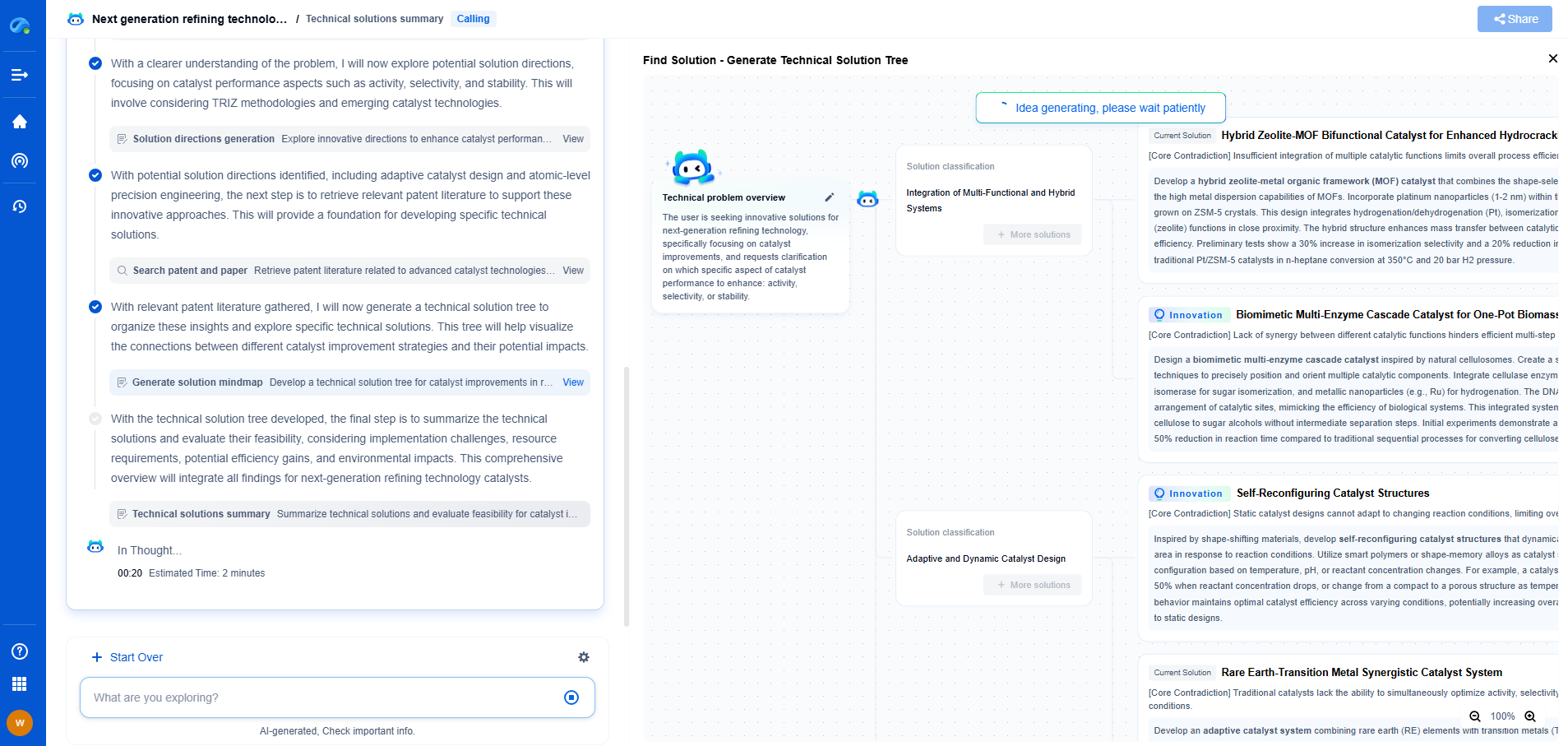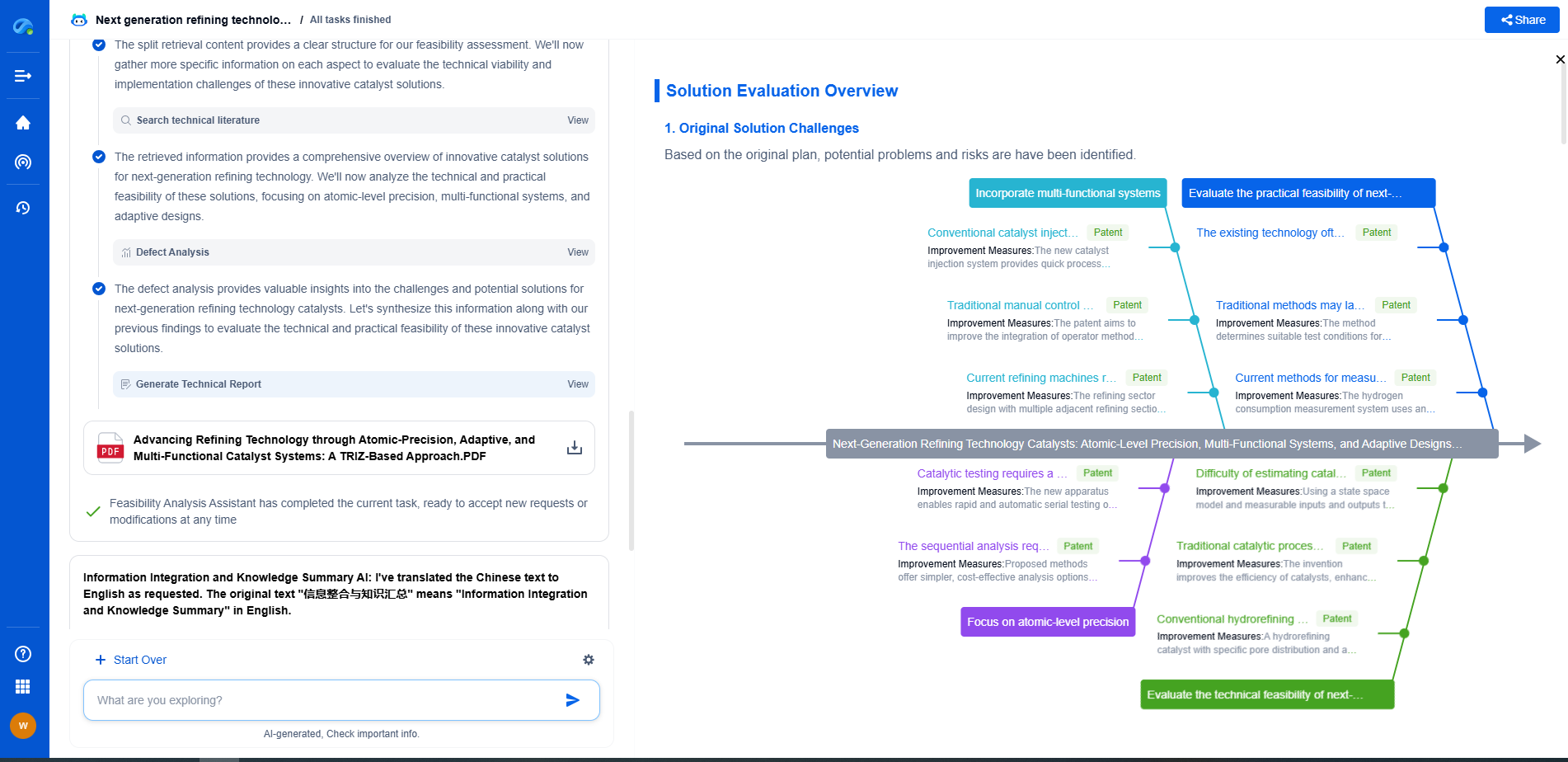Retrofitting Natural Gas Pipelines for Hydrogen: Material Compatibility Issues
JUN 20, 2025 |
Understanding Material Compatibility
The primary concern when considering the use of existing natural gas pipelines for hydrogen is the material compatibility. Natural gas pipelines are generally made from carbon steel, which may not be entirely suitable for hydrogen transport. Hydrogen is notorious for causing embrittlement in metals—a process where metals become brittle and fracture due to the diffusion of hydrogen atoms into the material. This poses a significant risk as it can lead to pipeline failures and safety hazards.
Hydrogen Embrittlement and its Impact
Hydrogen embrittlement occurs when hydrogen atoms penetrate the metal lattice, leading to a decrease in ductility and toughness. This can cause the pipeline material to crack or fail under stress. The risk of embrittlement is influenced by several factors, including the type of steel, temperature, pressure, and the presence of stress concentrators such as welds or notches. In pipelines initially designed for natural gas, these factors were not a primary concern, thus raising the question of their suitability for hydrogen.
Material Selection and Alternatives
To address the issue of hydrogen embrittlement, selecting the right materials is crucial. Stainless steels and certain nickel alloys show better resistance to hydrogen embrittlement compared to carbon steels. However, these materials are significantly more expensive. For retrofitting existing pipelines, a comprehensive evaluation of the pipeline materials is necessary to determine their suitability. This may involve testing under simulated operating conditions to assess the risk of embrittlement.
Coatings and Linings as Potential Solutions
Another approach to mitigating the risk of hydrogen embrittlement is the use of internal coatings or linings. These can serve as a barrier to prevent hydrogen from interacting directly with the pipeline material. Several types of coatings, including epoxy-based and polymer linings, have been explored for their effectiveness in enhancing pipeline integrity. However, the application of these coatings must be carefully managed to ensure they adhere properly and do not introduce additional risks, such as chemical degradation or delamination.
The Role of Pressure and Temperature
Hydrogen's behavior under varying pressure and temperature conditions also affects pipeline integrity. Hydrogen pipelines operate at higher pressures than natural gas lines, potentially exacerbating material challenges. The temperature also plays a role; lower temperatures can increase the likelihood of embrittlement. Therefore, an understanding of the operational conditions is paramount in assessing the retrofitting feasibility.
Case Studies and Real-World Applications
Several pilot projects and case studies have been conducted to evaluate the feasibility of hydrogen transportation through existing pipelines. In some instances, pipelines have been successfully retrofitted with minimal modifications, while others required extensive material upgrades. These studies provide valuable insights into best practices and the potential pitfalls of retrofitting projects. They highlight the importance of a tailored approach that considers the specific properties of the pipeline materials and the operating conditions.
Conclusion: Balancing Cost and Safety
Retrofitting natural gas pipelines for hydrogen transport presents a viable path towards achieving a hydrogen-based economy. However, the challenges associated with material compatibility cannot be underestimated. While new materials and coatings offer promising solutions, they also come with increased costs. A balanced approach that weighs safety, cost, and operational efficiency is essential. Continuous research and development, along with rigorous testing and monitoring, will play a crucial role in ensuring that pipeline retrofitting is both safe and economically viable.
As the transition to cleaner energy sources gains momentum, the successful integration of hydrogen into existing infrastructure will be pivotal. By addressing the material compatibility challenges, we can pave the way for a more sustainable and secure energy future.
Transform the Way You Innovate in Pipeline Technology—with AI-Powered Intelligence
From corrosion-resistant materials to smart monitoring systems and advanced flow control mechanisms, the pipeline industry is undergoing rapid technological transformation. Yet keeping up with evolving engineering solutions, regulatory landscapes, and competitive patents can be a major bottleneck for R&D and IP teams.
Patsnap Eureka is your AI-powered research companion—built specifically for professionals in high-tech and infrastructure domains like pipeline technology. Whether you're designing high-pressure transport systems, assessing trenchless installation innovations, or safeguarding proprietary flow assurance solutions, Eureka provides real-time insights into global patent trends, emerging technologies, and R&D intelligence—all in one intuitive interface.
Empower your team to innovate faster, reduce technical blind spots, and stay ahead of industry shifts. Discover Patsnap Eureka today and bring clarity and confidence to your pipeline technology decisions.
- R&D
- Intellectual Property
- Life Sciences
- Materials
- Tech Scout
- Unparalleled Data Quality
- Higher Quality Content
- 60% Fewer Hallucinations
Browse by: Latest US Patents, China's latest patents, Technical Efficacy Thesaurus, Application Domain, Technology Topic, Popular Technical Reports.
© 2025 PatSnap. All rights reserved.Legal|Privacy policy|Modern Slavery Act Transparency Statement|Sitemap|About US| Contact US: help@patsnap.com

